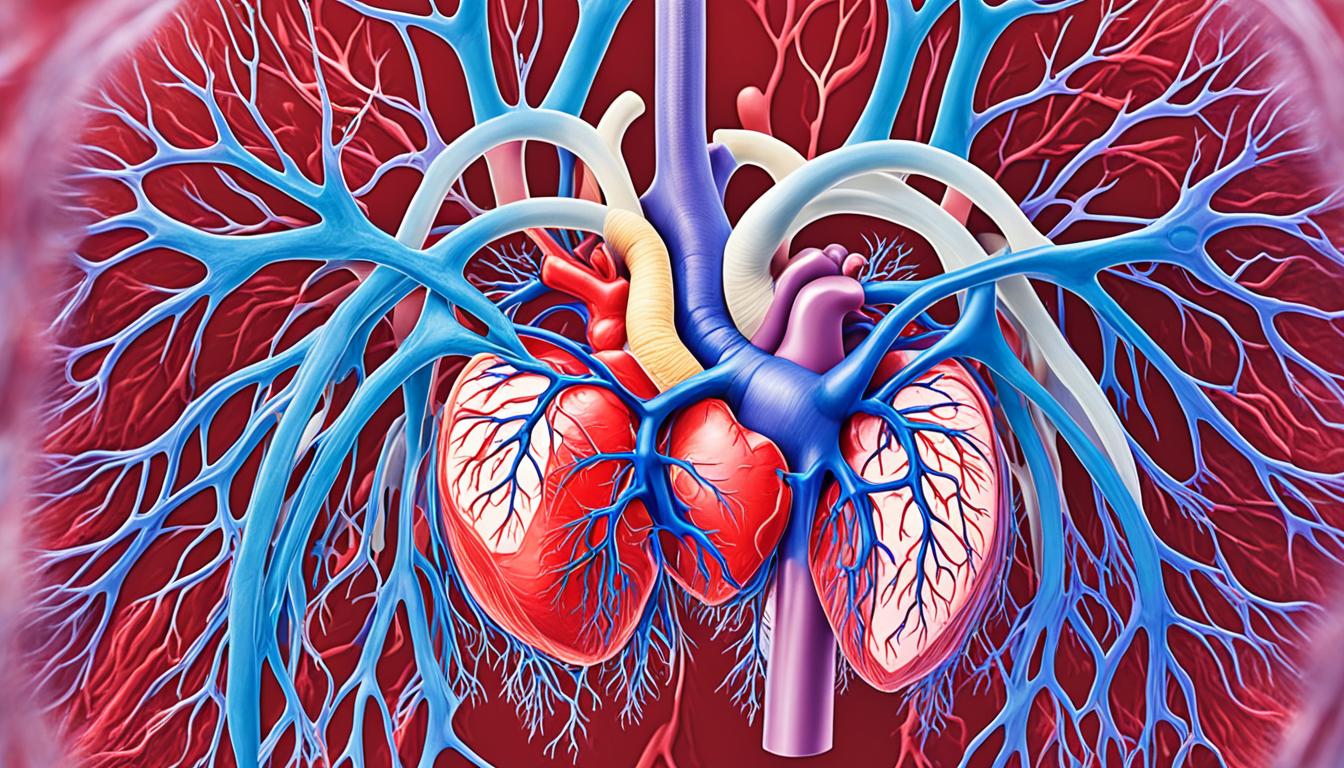Fallot tetralogy of disease is a type of congenital heart defect. It shows four heart problems: ventricular septal defect, pulmonary stenosis, right ventricular hypertrophy, and an overriding aorta. The heart can’t pump enough oxygen-rich blood, leading to cyanosis, or a blue appearance. Doctors diagnose it by examining the patient, imaging the heart, and using a small tube to see the heart’s arteries. The primary treatment is with surgery. But, there’s promise in using stem cell therapy and tissue engineering as new treatment fronts.
Key Takeaways:
- Fallot tetralogy of disease is a congenital heart defect characterized by four structural abnormalities in the heart.
- The most common symptom is cyanosis or blue baby syndrome.
- Diagnosis is made through physical examination, medical imaging, and cardiac catheterization.
- Surgical repair is the main treatment option for managing Fallot tetralogy.
- Stem cell therapy and tissue engineering offer potential alternative treatments for Fallot tetralogy.
Management of Fallot Tetralogy Symptoms and Surgical Repair
A baby with Fallot tetralogy’s symptoms can be controlled before surgery.
- Fallot tetralogy symptoms often include episodes of respiratory distress. Placing the baby in a squatting position during these times helps.
- The baby must drink enough fluids to prevent dehydration. This keeps their blood volume up, aiding in proper circulation.
- It’s vital that they avoid too much physical activity. Overdoing can make their symptoms, like cyanosis, and breathlessness worse.
- They should also stick to their medication schedule to help control symptoms and avoid problems.
Surgical repair is the main treatment for Fallot tetralogy. Usually, it’s done when the baby is very young.
The surgery involves these steps:
- Opening up the pulmonary valve to boost blood flow and ease stress on the right ventricle.
- Surgically closing the hole between the ventricles stops the mixing of blood types.
- In some cases, a temporary shunt helps blood flow better until full repair is possible.
Although most surgeries go well, there can be issues:
- Problems like pulmonary valve leaks may happen, needing more surgery.
- Heart rhythm issues, called arrhythmias, might need medicine or further treatment.
- Small residual heart defects might need to be checked or fixed later on.
Early repair surgery is still the best way to handle Fallot tetralogy. It offers the best chance for a good life.
Potential of Stem Cell Therapy for Fallot Tetralogy
Stem cell therapy and tissue engineering are showing hope in treating Fallot tetratology. This condition has four heart abnormalities from birth. They use stem cells to make living parts that are put into the heart. This helps in heart growth and repair. The goal is to lessen the need for many surgeries and make the heart work better.
Experts have looked at various stem cell types, like those found in the heart and blood vessels. They aim to make grafts that can fix the heart tissue in Fallot tetratology patients. Tissue engineering is opening up new ways to heal hearts through regenerative medicine.
Using stem cell therapy for Fallot tetratology is at the start of its testing. It could be an option to help along with surgeries for people with this serious heart issue. More research is needed to find out if stem cell therapy is safe and really helps people with Fallot tetratology.

